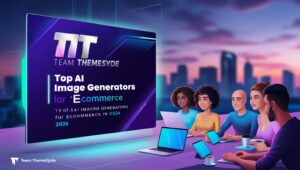
Top AI Image Generators for E-commerce in 2024 | Team Themesyde
AI Image Generators for E-commerce
Introduction
The world of e-commerce is rapidly evolving, and in 2024, AI is at the forefront of this transformation. Among the many AI advancements, AI image generators stand out as game-changers for online retailers. These tools streamline the creation of high-quality visuals, saving time and boosting productivity. Whether it’s product images or creative marketing visuals, AI is making it easier than ever to present a polished online store
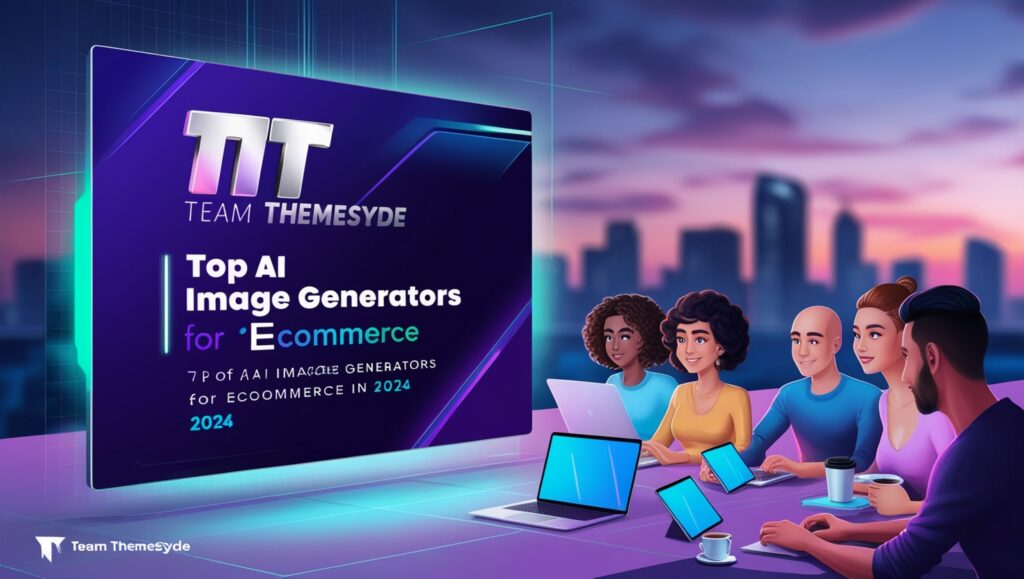
In this guide, we’ll explore the top AI image generators revolutionizing e-commerce in 2024. You’ll discover tools that help you create professional-quality images with minimal effort, how to use them effectively for your store, and the benefits they bring to your business. Additionally, we’ll introduce Themesyde, a leading provider of affordable and high-quality AI prompts, designed to make these tools even more powerful for your e-commerce success.
Table of Contents
What Are AI Image Generators?
AI image generators are innovative tools that leverage artificial intelligence, specifically machine learning models like GANs (Generative Adversarial Networks) and deep learning techniques, to create visual content. These models are trained on vast datasets of images, which allows them to understand different visual elements—such as color, texture, and shape—and how they combine to form cohesive visuals.
The process starts when a user inputs a text description, also called a “prompt,” into the AI. The AI then interprets this prompt and generates an image based on the parameters provided. Whether it’s a photorealistic scene, abstract artwork, or a stylized graphic, AI Image Generators can produce an array of visuals with just a few simple instructions.
What makes these generators unique is their ability to understand context and style. For example, a prompt like “a sunset over the ocean with a small sailboat” can result in images that range from realistic, hand-drawn, or even highly stylized representations—depending on the generator used.
🔍 Expert Insight: The technology behind AI Image Generators has improved rapidly in recent years. Tools like DALL·E, MidJourney, and Stable Diffusion are gaining popularity due to their ability to turn complex, human-language prompts into striking visuals. These tools are now making creativity more accessible to people without professional design expertise.
Importance for E-commerce
In the fast-paced world of e-commerce, visual content is one of the most powerful tools for grabbing attention and driving sales. In fact, studies show that online customers are significantly more likely to engage with and purchase from brands that use high-quality images and compelling product visuals. However, the traditional process of creating custom images—whether through professional photographers, designers, or stock photo sites—can be expensive and time-consuming.
This is where AI Image Generators play a game-changing role. They allow e-commerce businesses to create visually appealing content on demand, without needing a large creative team or a significant budget. For example, an online fashion retailer can use AI to create realistic product mockups, seasonal marketing banners, or social media ads, all tailored to specific promotions or audience preferences.
Some specific advantages include:
- Cost Savings: Businesses can save on professional design and photography fees. Instead of outsourcing these tasks, they can use AI-generated visuals that are both unique and relevant.
- Scalability: E-commerce platforms often need a high volume of content, from product listings to blog images and promotional graphics. With AI, businesses can scale their content production without sacrificing quality or speed.
- Customization: Brands can create visuals that align perfectly with their aesthetics, color schemes, and messaging. This level of customization is essential for standing out in a crowded marketplace.
💡 Pro Tip: In an age where e-commerce platforms are expanding globally, AI-generated visuals can also help localize content. For example, creating culturally relevant imagery for different regions, or producing images that reflect seasonal trends in specific markets, is easier and faster with AI.
Moreover, AI image generators are ideal for brands that need to constantly refresh their visual content. Social media channels like Instagram, Pinterest, and Facebook thrive on fresh, visually stimulating posts, and AI tools make it simple for businesses to post regularly without the repetitive cost and effort of manual creation.
To sum up, AI Image Generators are revolutionizing how e-commerce businesses approach visual content creation. They offer cost-effective, scalable, and customizable solutions that empower brands to produce images quickly, helping them keep up with the increasing demand for high-quality visuals. Whether a small startup or a large retailer, integrating AI-driven tools can streamline content strategies and significantly enhance a brand’s online presence.
Why AI Image Generators Are Essential for E-commerce in 2024
In today’s fast-paced digital world, visuals are more important than ever. 🌐 With more people shopping online, having visually stunning product images can make or break an e-commerce business. Consumers form opinions about products within seconds, often based solely on what they see. That’s why E-commerce in 2024 is heavily reliant on strong visuals.
AI Image Generators are transforming how businesses create these visuals, making it easier and more affordable to generate high-quality images. Let’s dive into why these tools are essential for e-commerce businesses in 2024. 🚀
2. Visual Appeal in E-commerce
The Power of Visuals: In e-commerce, visuals play a critical role in driving sales. 🛒 Studies show that 90% of online shoppers make purchasing decisions based on product images. The better the images, the more likely customers are to trust and buy from your store. A blurry or poorly lit image can lead customers to abandon your site, costing you potential revenue.
Building Trust Through Quality: High-quality visuals help build credibility and professionalism. 📸 Customers are more likely to engage with brands that showcase their products with clear, attractive images. AI Image Generators allow businesses to create beautiful, realistic images without needing expensive equipment or professional photographers.
The Role of AI Image Generators: AI tools can automatically generate visuals based on specific criteria, such as color schemes or product types. 🎨 For example, if you sell clothing, AI can instantly produce product photos in different settings, styles, or variations. These tools allow for endless creativity and flexibility, helping businesses stand out in a crowded marketplace.
3. Speed and Efficiency
Faster Time to Market: Time is critical in E-commerce in 2024. ⏳ Traditional photography and design processes can take days or even weeks, but AI Image Generators can create visuals in minutes. This rapid turnaround allows businesses to launch new products and marketing campaigns faster than ever before, giving them a competitive edge.
Cost Savings: Hiring photographers, graphic designers, and purchasing editing software can be expensive. 💸 For small businesses, these costs add up quickly. AI Image Generators are a cost-effective solution, providing businesses with professional-level visuals at a fraction of the price. This democratizes access to high-quality images, allowing smaller brands to compete with larger companies.
Consistency Across Platforms: Maintaining consistent visuals across your website, social media, and ads is essential for building brand recognition. 🎯 AI tools help generate visuals that maintain the same look and feel, ensuring your brand identity is cohesive no matter where your customers see your content.
Scaling Made Easy: As your e-commerce business grows, the need for more visuals increases. 🌱 AI Image Generators make it easy to scale image production without sacrificing quality or consistency. Whether you need one image or a thousand, these tools can handle the load with ease, allowing your business to keep up with demand.
4. Future Trends in AI for E-commerce Visuals
AI Evolution: The capabilities of AI Image Generators are continually improving. In the future, these tools may be able to create entirely new product visuals from just a few prompts or ideas. 🧠 Imagine typing in a few keywords and having AI generate a completely new design or concept for your product.
Personalized Visuals: AI can also help create hyper-targeted images for specific customer demographics. For example, you could tailor images to appeal to different age groups or regions. This level of personalization can significantly boost engagement and sales. 🎯
AI and Augmented Reality (AR): Combining AI with AR technology could allow customers to visualize products in real-world environments. 🔮 Customers could see how furniture looks in their living room or try on clothes virtually before making a purchase. AI-generated images will make these experiences more realistic and accessible to e-commerce platforms.
In conclusion, AI Image Generators are a game-changer for E-commerce in 2024. 🌟 They offer the perfect combination of speed, affordability, and quality, helping businesses of all sizes create stunning visuals that drive sales. As competition in the online space continues to grow, using AI-powered tools will give businesses a significant edge. 💼
By embracing AI, businesses can stay ahead of the curve, streamline their marketing processes, and produce consistent, high-quality visuals across all platforms. 🚀 The future of e-commerce is visual, and AI Image Generators are leading the way!
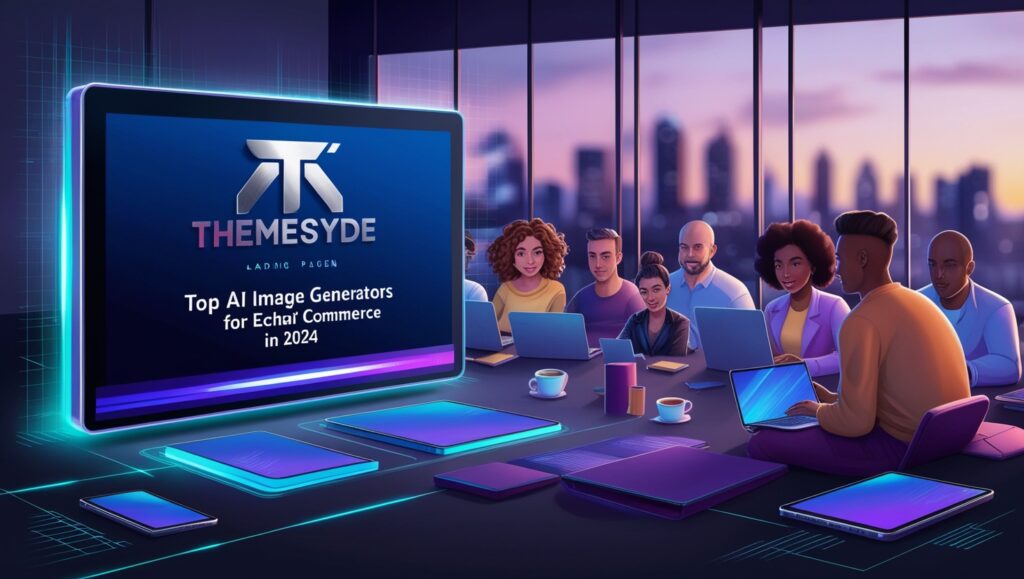
How AI Image Generators Impact Product Marketing
AI has transformed various industries, and product marketing is no exception! The ability to generate high-quality visuals using AI is becoming a game-changer, especially for online businesses. In 2024, with the rise of AI Image Generators, marketers are discovering new ways to showcase their products with minimal effort and maximum impact. This post will dive deep into how AI can enhance product images for e-commerce and offer creative freedom to marketers, ultimately reshaping the entire landscape of product marketing. 🌟
2. Product Images: AI’s Role in Creating Stunning Visuals
High-Quality Product Images Without a Photoshoot
Traditionally, creating professional product images required extensive photoshoots, lighting setups, and photography experts. This process could be time-consuming and costly for businesses. However, AI Image Generators now offer the ability to create hyper-realistic product visuals, even from scratch. These tools use advanced algorithms to design and render product images that look just as polished as professional photos. For e-commerce businesses, where the visual appeal of a product is critical to conversions, this capability is invaluable. 🖼️
Consistency Across Marketing Channels
One challenge that marketers often face is maintaining consistent imagery across various platforms like websites, social media, and ads. AI can streamline this by producing a cohesive set of visuals that match the brand’s style, color scheme, and design preferences. This ensures that whether a product is displayed on an e-commerce website, social media, or an ad campaign, it maintains a uniform look, enhancing brand recognition. 🛍️
Efficiency and Speed
AI doesn’t just generate stunning visuals—it does so incredibly fast. Tasks that used to take hours, like photo editing, background removal, or lighting adjustments, are completed in a matter of seconds with AI tools. This efficiency means marketers can quickly adapt their product images to suit different audiences or platforms without needing to start from scratch. It also allows businesses to create large quantities of visuals in a short time, ideal for dynamic marketing strategies. ⏱️
3. Creative Freedom for Marketers
Customizable and Flexible Designs
Marketers are always seeking ways to stand out in crowded digital spaces, and creativity plays a key role in capturing customer attention. AI Image Generators empower marketers by offering them flexibility to experiment with design elements that would typically require professional graphic design skills. Want to add a unique texture to a product image? Or maybe incorporate imaginative elements that highlight a product’s features? AI makes it possible! 🎨
These tools allow for endless customization—users can manipulate colors, textures, angles, and backgrounds with ease, giving marketers the opportunity to craft unique and eye-catching designs tailored specifically to their campaigns. This level of creative freedom enables brands to distinguish themselves from competitors in a fast-moving e-commerce market.
Lower Costs for Businesses
In the past, creating custom visuals often required large design teams, external freelancers, or expensive software. Now, businesses can significantly cut these costs by leveraging AI. Instead of relying on human designers for every creative task, AI tools can handle much of the heavy lifting, whether it’s creating mockups, enhancing photos, or generating entirely new designs. This is particularly beneficial for small to mid-sized e-commerce brands that might not have the resources to maintain a full design department. 💰
Speed and Scalability for Campaigns
AI doesn’t just help with individual product images—it can scale creativity for entire campaigns. For example, a marketer might need to create variations of the same product for different demographics. With AI, they can rapidly generate multiple versions of visuals, each tailored for a specific target audience. This ability to scale without sacrificing creativity means brands can run multiple campaigns simultaneously, adapting their product images to different platforms or audiences in record time. 📈
In today’s fast-paced digital market, the ability to create stunning visuals quickly and affordably is crucial, and AI Image Generators are leading this charge. For e-commerce businesses, these tools offer a powerful solution to producing professional-quality product images without the hassle of traditional photoshoots. Moreover, AI empowers marketers with the creative freedom to design unique visuals that can engage customers across various platforms. Whether you’re looking to enhance your brand’s image consistency, save on costs, or experiment with new design ideas, AI tools are revolutionizing the world of product marketing—and the possibilities are endless! 🚀
Benefits of AI Image Generators for E-commerce Businesses
1. Enhanced Visuals 🌟:
In the highly competitive world of e-commerce, first impressions matter immensely. High-quality visuals can make or break a sale, and AI image generators are revolutionizing how businesses create their product imagery. These advanced tools utilize machine learning algorithms to produce stunning, photorealistic images that elevate the presentation of products.
Imagine being able to generate detailed images that showcase your products in various settings—like a cozy living room for furniture or a vibrant outdoor scene for clothing. AI image generators allow e-commerce businesses to create versatile and engaging visuals without the need for costly photo shoots. This not only enhances the overall aesthetic appeal of online storefronts but also helps attract potential customers more effectively. Higher-quality images lead to increased customer trust and, ultimately, higher conversion rates! 📈
2. Cost Savings 💰:
For many e-commerce businesses, budget constraints are a significant concern. Traditional graphic design processes can be expensive and time-consuming. Hiring professional photographers and graphic designers often requires a hefty budget, which can be challenging for smaller businesses or startups. Here’s where AI image generators come into play!
By using these innovative tools, businesses can save substantial amounts on graphic design costs. AI tools automate the image creation process, enabling users to generate stunning visuals at a fraction of the price. For instance, instead of spending hours and dollars on a single product photo shoot, businesses can produce multiple high-quality images in just a few clicks. This efficiency not only reduces costs but also accelerates the time to market for new products, allowing businesses to respond quickly to trends and consumer demands. ⏱️
3. Customization 🎨:
The ability to customize visuals is a game-changer for e-commerce businesses. In today’s market, personalization is key to standing out from the competition. AI image generators provide an unparalleled level of flexibility when it comes to creating tailored images that cater to specific product needs.
Whether you need to adjust colors to match your brand identity, create seasonal designs for holidays, or develop images that reflect different styles and demographics, AI tools can handle it all. This level of customization means that businesses can generate visuals that resonate deeply with their target audience. For example, a fashion retailer might create images that feature models of different ethnicities and body types, enhancing inclusivity and broadening their appeal. Such personalized visuals can lead to increased customer loyalty and a more profound connection with the brand. 💖
AI image generators are transforming the e-commerce landscape by enhancing visuals, saving costs, and allowing for unparalleled customization. For businesses looking to thrive in a digital-first world, embracing these innovative tools is not just an option; it’s a necessity. By leveraging the power of AI, e-commerce businesses can create stunning, effective marketing materials that drive sales and build lasting relationships with customers.
Top AI Image Generators for E-commerce in 2024
In the fast-evolving world of e-commerce, visuals play a pivotal role in capturing consumer attention. With millions of products vying for visibility online, businesses need standout images that not only attract clicks but also drive conversions. Enter AI image generators: these innovative tools use advanced algorithms to create stunning visuals tailored to specific needs. 🌟 In 2024, the integration of AI image generators into e-commerce strategies is not just a trend—it’s a necessity. This guide will explore the top AI image generators for e-commerce, comparing their features, pros, and cons to help you find the perfect fit for your brand. Let’s dive in! 🏊♂️
Overview of Top Tools
As we explore the landscape of AI image generation, here are three standout tools that have garnered attention in 2024:
- DALL-E: Created by OpenAI, DALL-E is known for its capability to generate highly creative and unique images from textual descriptions. This allows businesses to produce visuals that perfectly align with their branding and marketing campaigns. 🎨
- Midjourney: This tool specializes in producing artistic, stylized images, making it ideal for brands looking to convey a strong narrative or aesthetic through their visuals. Its ability to create emotionally resonant imagery makes it a favorite among creative industries. ✨
- Canva AI: Leveraging its established design platform, Canva now integrates AI features to streamline the creation of images and marketing materials. With a user-friendly interface, it allows businesses to design visuals quickly and efficiently. 🖌️
Feature Comparisons
To facilitate your decision-making, here’s a detailed comparison of the top AI image generators tailored for e-commerce:
| Tool Name | Key Features | Pros | Cons | Pricing |
|---|---|---|---|---|
| DALL-E | – Text-to-image generation | – High creativity and uniqueness | – May require precise prompts | – Subscription-based |
| – Custom styles and variations | – Great for product visuals | – Learning curve for new users | – Starting at $15/month | |
| Midjourney | – Artistic style generation | – Excellent for storytelling | – Requires understanding of prompts | – Pay-per-use |
| – Community-driven feedback | – Produces visually striking images | – Limited commercial rights | – Starting at $10/image | |
| Canva AI | – Integrated design tools | – User-friendly; quick to create visuals | – Limited in advanced features | – Free & paid tiers |
| – Templates for various formats | – Excellent for marketing collateral | – Less unique compared to others | – Paid plans from $12.99/month |
Tool Analysis
Tool 1: DALL-E
DALL-E is a groundbreaking tool that transforms textual prompts into visually rich images. For example, if a business owner inputs “a modern wooden chair with floral patterns,” DALL-E generates multiple image options that perfectly fit that description. This capability is particularly useful for e-commerce businesses that want to showcase products in creative and unique ways, helping them stand out in a crowded marketplace. 🏷️
DALL-E’s strength lies in its ability to produce images that reflect specific themes or styles, allowing brands to create cohesive visual identities across their online platforms. However, it’s important to note that crafting effective prompts can require some practice and experimentation.
Tool 2: Midjourney
Midjourney is ideal for brands aiming to create artistic and stylized images that tell a story. With its community-driven approach, users can leverage feedback to refine their prompts and achieve desired results. This tool excels in generating visually captivating images that are perfect for branding campaigns, especially in sectors like fashion, art, and lifestyle. 🌈
For instance, a cosmetics brand might use Midjourney to create striking visuals that highlight the essence of their products, enhancing emotional connections with potential buyers. However, users should be aware that navigating Midjourney’s unique style can take time, and understanding how to effectively communicate your vision is crucial.
Tool 3: Canva AI
Canva has long been a go-to platform for marketers, and its integration of AI features takes it to the next level. Users can easily create professional-quality visuals without needing extensive design skills. The platform offers a wealth of templates tailored for various marketing needs, making it a convenient choice for e-commerce businesses looking to produce social media posts, ads, and product images quickly. 🖼️
While Canva AI is fantastic for speed and ease of use, its templates may lack the unique flair that comes from more specialized tools like DALL-E or Midjourney. Nonetheless, its ability to create cohesive branding materials across platforms makes it an invaluable asset for businesses.
Choosing the Right AI Image Generator
When it comes to selecting the right AI image generator, consider the following factors:
- Purpose: What type of images do you need? If you require unique product visuals, DALL-E might be best. For storytelling, consider Midjourney.
- Ease of Use: If you’re a beginner, Canva AI’s user-friendly interface may be the right choice.
- Budget: Evaluate your budget for image generation. DALL-E offers subscription plans, while Midjourney operates on a pay-per-use model.
Ultimately, the right choice will depend on your specific business needs and how you plan to integrate these tools into your marketing strategy. Remember, selecting the appropriate AI image generators for e-commerce in 2024 can significantly impact your online presence! 🛍️
Success Stories
Several brands have successfully harnessed the power of AI image generators to enhance their e-commerce strategies. For example, a clothing retailer utilized DALL-E to generate unique product visuals for its seasonal collection. This resulted in a remarkable 30% increase in engagement across social media platforms, showcasing how effective visuals can drive interest and sales. 🚀
Another beauty brand leveraged Midjourney to craft captivating campaign visuals that resonated with their target audience, ultimately leading to a significant boost in online sales. These success stories highlight the transformative potential of AI image generators in the competitive e-commerce landscape.
In conclusion, AI image generators are game-changers for e-commerce businesses looking to elevate their visual marketing strategies in 2024. By understanding the unique features and capabilities of tools like DALL-E, Midjourney, and Canva AI, you can create stunning visuals that not only attract customers but also drive conversions. As you explore your options, consider how these AI image generators for e-commerce can enhance your brand’s online presence and customer engagement. 🌍
Have you experimented with any of these AI image generators? Share your experiences or ask any questions in the comments below! Let’s discuss how these innovative tools can help elevate your e-commerce business and transform your marketing efforts. 💬
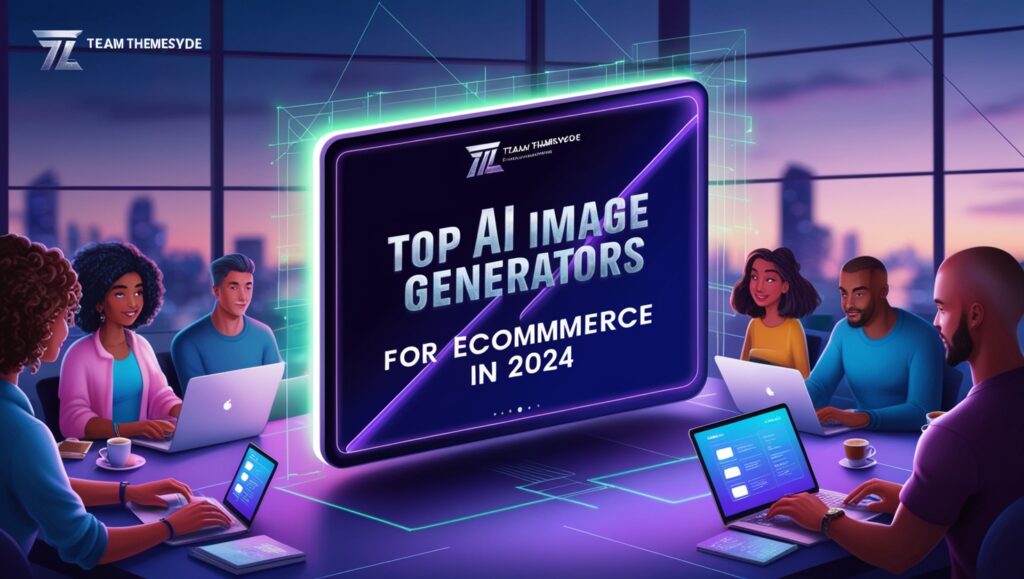
Features to Look for in AI Image Generators for E-commerce
In the competitive realm of e-commerce, striking visuals play a pivotal role in attracting customers and driving sales. Choosing the right AI image generators can help you create captivating product images tailored to your brand. Here, we’ll explore key features you should consider, along with detailed explanations and examples.
Key Features of AI Image Generators
| Feature | Importance |
|---|---|
| Customization Options | Tailored visuals that enhance product appeal and align with brand identity. |
| Ease of Use | A user-friendly interface that enables anyone, regardless of design skills, to create professional images effortlessly. |
| Integration with Platforms | Compatibility with e-commerce platforms like Shopify and WooCommerce for a streamlined workflow, saving time and effort. |
1. Customization Options 🎨
Customization options are essential in AI image generators for e-commerce because they allow you to create visuals that resonate with your brand identity and speak to your target audience.
Diverse Templates
- Wide Variety: Look for platforms that offer a wide selection of templates. For example, if you sell clothing, having templates for different apparel types, like shirts or dresses, can enhance your product presentation.
Style and Color Adjustments
- Brand Alignment: The ability to modify colors, fonts, and styles ensures your visuals reflect your branding. If your brand emphasizes minimalism, choose neutral backgrounds and clean lines to maintain consistency.
Background and Overlay Options
- Lifestyle Context: Some AI image generators allow you to change backgrounds or add overlays. This feature helps customers visualize how they might use your products, making them more appealing.
2. Ease of Use 🖥️
The ease of use of an AI image generator can make or break your design experience, especially for those without a design background.
User-Friendly Interface
- Intuitive Design: A clear, intuitive dashboard is crucial. The best tools provide drag-and-drop functionality that allows you to move elements around effortlessly.
Pre-built Assets and Elements
- Speed and Cohesion: Look for generators that offer pre-built assets, such as icons and graphics, to speed up the design process and create cohesive visuals.
Tutorials and Customer Support
- Learning Resources: Comprehensive tutorials can guide you through the design process, helping you understand how to utilize the tool effectively. Responsive customer support ensures quick troubleshooting.
3. Integration with Platforms 🔗
Integration with e-commerce platforms is a critical feature that streamlines your workflow, allowing you to focus on what matters most—growing your business.
Seamless Workflow
- Direct Uploads: Ensure the AI image generator integrates with popular platforms like Shopify and WooCommerce, allowing you to generate images and upload them directly to your store.
Automated Updates
- Instant Changes: Advanced tools may offer automated updates, meaning that if you make changes to your product images, those changes reflect instantly on your store.
Social Media Integration
- Marketing Made Easy: Some AI image generators allow you to share visuals directly on social media, enhancing your marketing efforts by enabling quick sharing of promotional images.
By focusing on these essential features, you can leverage AI image generators to enhance your e-commerce business. Customization options enable tailored visuals that align with your brand, ease of use ensures that anyone can create stunning images, and seamless integration with e-commerce platforms saves time and effort. Embracing these features not only elevates your product presentation but also drives customer engagement and sales. 🚀✨
Investing in the right AI image generator can set your e-commerce business apart from the competition. Take the time to evaluate these features to choose the best tool for your needs!
Prompts for AI Image Generators – Sold on Our Website
What Are AI Image Prompts? 🤔
- Definition and Functionality:
AI image prompts are the specific instructions or phrases that users provide to AI image generators. These prompts are crucial because they direct the AI on how to create visuals that align with user expectations. For example, a prompt like “a serene beach at sunset” guides the AI to focus on specific elements such as color, atmosphere, and scenery. - How They Work:
When a user inputs a prompt, the AI processes the text to identify key themes and styles. The more detailed and descriptive the prompt, the better the generated image will reflect the user’s vision. This process allows for a tailored outcome that can adapt to various creative needs.
| Aspect | Details |
|---|---|
| User Input | Specific phrases or descriptions |
| AI Processing | Analyzes text for themes and styles |
| Outcome | Customized visuals that meet or exceed expectations |
Themesyde’s Offerings 💡
- Affordable AI Prompts:
At Themesyde, we pride ourselves on offering a diverse selection of AI prompts at reasonable prices. Whether you’re a freelancer, a business owner, or a creative enthusiast, our prompts are designed to suit all budgets while maximizing creativity. - Benefits of Our Prompts:
Our customers often report significant improvements in their creative workflow. Here’s how:
| Benefit | Description |
|---|---|
| Cost-Effective | Competitive pricing makes it accessible for all users. |
| Enhanced User Experience | Curated prompts help streamline the creative process, saving time and effort. |
| Positive Feedback | Users frequently express satisfaction with the quality and effectiveness of our prompts. |
Benefits of Using Custom Prompts 🌟
- Enhancing Creativity:
Custom prompts allow users to express their unique ideas and visions. Instead of relying on generic settings, tailored prompts enable a personalized creative process. This specificity often results in distinctive visuals that stand out in a crowded market. - Boosting Productivity:
In the fast-paced world of e-commerce, time is critical. Custom prompts facilitate a quicker image creation process, enabling users to generate multiple visuals in less time. This efficiency is especially valuable for businesses that require a continuous stream of engaging content. - Practical Applications:
Here are some practical uses for custom prompts:
| Application | Description |
|---|---|
| Product Showcases | Generate high-quality images for products to attract potential buyers. |
| Marketing Materials | Create visually appealing graphics for advertisements and promotional content. |
| Social Media Posts | Quickly produce eye-catching visuals to engage audiences across platforms. |
By utilizing the tailored prompts for AI image generators available at Themesyde, users can enhance both their creativity and productivity. Our affordable, curated offerings are designed to meet various creative needs, ensuring that you can generate stunning visuals that resonate with your audience.
Explore our website today to discover how our prompts can elevate your creative projects! 🌐✨
How E-commerce Brands Use AI Image Generators to Boost Sales
In the competitive landscape of e-commerce, capturing consumer attention is more crucial than ever. 🌟 As online shopping continues to grow, brands must leverage innovative tools to enhance their marketing strategies.
- Importance of Visuals:
- High-quality visuals are essential in e-commerce because they convey product quality, evoke emotions, and drive purchasing decisions. A study shows that 93% of consumers consider visual appearance to be a key factor in their purchasing decisions. This emphasizes the necessity for brands to invest in quality imagery.
- Overview:
- This article will explore how AI image generators are revolutionizing marketing strategies for e-commerce brands, highlighting case studies, analyzing sales impacts, and providing actionable best practices for implementation.
1. Understanding AI Image Generators
- Definition:
- AI image generators are sophisticated software tools that utilize artificial intelligence to create images. These generators can produce diverse visuals—ranging from product shots to lifestyle images—based on user-defined parameters. 🤖
- Technology Behind Them:
- The technology behind AI image generators typically involves Generative Adversarial Networks (GANs). This method consists of two neural networks: the generator, which creates images, and the discriminator, which evaluates them. Over time, this process allows the generator to create increasingly realistic images by learning from feedback.
2. Benefits for E-commerce Brands
| Benefit | Description |
|---|---|
| Cost-Effectiveness | Traditional photography can be prohibitively expensive, involving costs for models, locations, and editing. AI image generators allow brands to create high-quality visuals without these expenses, enabling them to allocate resources elsewhere in their marketing strategies. 💰 |
| Speed | Time is of the essence in marketing. AI image generators can create images in mere minutes, allowing brands to quickly adapt to trends or seasonal changes. This agility is critical for maintaining relevance in fast-paced markets. ⏱️ |
| Customization | AI image generators enable brands to produce tailored visuals that resonate with specific target audiences. For instance, brands can create images reflecting seasonal themes, promotional events, or specific demographics, ensuring that content remains engaging and pertinent. 🎨 |
| Scalability | As e-commerce brands grow, so do their visual content needs. AI image generators can produce large volumes of images efficiently, making it easier to scale marketing efforts without compromising on quality. 📈 |
3. Case Studies of Successful E-commerce Brands
- Brand A: Visual Storytelling
- Overview: A sustainable lifestyle brand focused on eco-friendly products aimed at environmentally-conscious consumers.
- Implementation: The brand employed AI image generators to create stunning visuals that depicted their products in natural settings, such as reusable bags in lush landscapes.
- Results: As a result, engagement rates increased by 30%, while sales surged by 25% over three months. This demonstrates the power of compelling storytelling through visuals. 📊
- Brand B: Seasonal Promotions
- Overview: A trendy fashion retailer known for its seasonal collections, always looking to embody the spirit of each season.
- Implementation: For holiday promotions, the brand used AI-generated images to create eye-catching promotional materials featuring festive colors and themes, including social media graphics and website banners.
- Results: The holiday campaign yielded a remarkable 40% increase in conversion rates compared to the previous year, showcasing the effectiveness of tailored visuals for seasonal marketing. 🎉
- Brand C: Social Media Strategy
- Overview: An online beauty store heavily reliant on Instagram to connect with its audience, focusing on trends and visual allure.
- Implementation: The brand leveraged AI-generated visuals to produce vibrant, engaging content that showcased products in creative ways, such as tutorials and styled shoots aligned with beauty trends.
- Results: The strategy led to a 50% increase in followers and a significant boost in interactions, including likes and shares. The shareability of AI-generated content made it a key asset for social media growth. 📸
4. Sales Impact of High-Quality Visuals
- Visual Appeal:
- Visually appealing images create strong first impressions, increasing the likelihood that consumers will explore products further. Research shows that consumers are 80% more likely to engage with visually compelling content. This underlines the critical role visuals play in capturing attention. 🖼️
- Trust and Credibility:
- High-quality visuals help establish a brand’s credibility. Brands that present professional-quality images are perceived as more trustworthy, which is essential in an environment where online shoppers cannot physically interact with products. A study found that 57% of consumers prefer to buy from brands they trust. 🤝
- Conversion Rates:
- Investing in high-quality visuals has been shown to increase conversion rates significantly—by as much as 90%. This statistic highlights the importance of aesthetics in e-commerce, where effective imagery can make or break a sale.
5. Best Practices for Using AI Image Generators in E-commerce
| Best Practice | Explanation |
|---|---|
| Choosing the Right Tool | Brands should carefully evaluate AI image generators based on specific needs, considering features like user interface, output quality, and customization options. This ensures the selected tool aligns with marketing goals. 🔍 |
| Consistency in Branding | Maintaining a cohesive brand identity is essential. AI-generated images should consistently reflect the brand’s visual style, color palette, and messaging to reinforce recognition and loyalty among consumers. 🎯 |
| Testing and Optimization | Continuous testing of different visuals is vital. Brands should analyze performance metrics to determine which images resonate best with their audience, optimizing campaigns accordingly. This iterative process helps improve effectiveness over time. 📊 |
6. Future Trends in AI Image Generation
- Increased Personalization:
- Future AI image generators are expected to offer even more personalization options, allowing brands to create hyper-targeted visuals for specific customer segments based on data analytics. This could include dynamically generated images that adapt in real-time to user preferences. 🔮
- Integration with Augmented Reality (AR):
- The integration of AI-generated visuals with AR technology could revolutionize how customers interact with products online. Imagine being able to see how a piece of furniture looks in your living room before purchasing it! This fusion of technologies enhances the shopping experience and reduces returns. 🛋️
- Enhanced User Experience:
- As technology evolves, the user interface of AI image generators will likely become more intuitive, making it easier for non-designers to create high-quality visuals. This democratization of design tools will empower more brands to leverage professional-grade imagery. 🌐
- Recap of Benefits:
- The adoption of AI image generators provides numerous advantages for e-commerce brands, including cost savings, speed, scalability, and customizable visuals that engage consumers effectively.
- Don’t miss the chance to elevate your e-commerce marketing! Explore AI image generation tools that can transform your visual content and lead to increased engagement and sales. 🚀 By harnessing this technology, you can set your brand apart in the competitive e-commerce landscape.
How to Choose the Right AI Image Generator for Your E-commerce Business
In the competitive landscape of e-commerce, captivating visuals can make or break your success. AI Image Generators provide businesses with the tools to create stunning graphics quickly and efficiently. These tools can transform your product presentations, enhance your advertisements, and boost your social media presence. 🌟
- Purpose:
This guide will help you navigate the vast array of AI image generators available today. By understanding the key features, budget considerations, and specific use cases, you’ll be equipped to choose the best tool for your e-commerce business. 🛍️
2. Budget Considerations
- Understand Your Budget:
Before diving into the world of AI image generators, evaluate how much you can allocate for these tools. A clear budget will help you narrow down your options and make informed decisions. Consider both initial costs and ongoing expenses. 📊 - Free vs. Paid Tools:
The choice between free and paid tools can significantly impact your e-commerce operations. Here’s a comparison to help you understand the differences: Type Description Pros Cons Free Basic features available at no cost, often with limitations. Cost-effective; ideal for startups Limited features; lower image quality Paid Comprehensive features and capabilities for a monthly fee. Advanced tools; high-quality outputs Recurring costs; may require commitment - Cost-Benefit Analysis:
Conduct a thorough cost-benefit analysis. Sometimes, investing in a more expensive tool can lead to better quality images and faster workflow, ultimately saving you money through increased sales. A tool that enhances your branding can pay for itself. 💰
3. Specific Use Cases
- Product Images:
High-quality product images are crucial in e-commerce. AI image generators can help you create professional-looking photos that highlight the best features of your products. Look for tools that enhance color accuracy and detail, as these elements can influence purchasing decisions. 🖼️ - Examples of Effective Use:
- Clothing: Generating lifelike images that display fabric texture and fit.
- Electronics: Showing detailed close-ups that showcase features.
- Ad Creation:
Advertising is key to driving traffic and sales. Choose generators that offer customizable templates tailored for various ad formats. This flexibility allows you to maintain brand consistency across platforms like Google Ads, Facebook, and Instagram. 🎯 - Examples of Effective Use:
- Social Media Ads: Creating engaging visuals that capture attention quickly.
- Banner Ads: Designing eye-catching graphics that promote sales or special offers.
- Social Media Content:
For effective social media marketing, visuals must be engaging and tailored for each platform. Opt for AI image generators that create content optimized for Instagram, Facebook, Pinterest, and more. Consistent, high-quality graphics can significantly enhance your online presence. 📱
4. Features to Look For
- User-Friendly Interface:
A user-friendly interface can make a significant difference in how effectively you use an AI image generator. Tools that are easy to navigate allow you to focus on creativity rather than struggling with complex features. Look for options with drag-and-drop capabilities and clear menus. 🖥️ - Quality of Output:
The quality of images produced is paramount. Ensure the AI generator can create high-resolution images that meet or exceed e-commerce standards. Low-quality visuals can deter potential customers and damage your brand’s reputation. 🌈 - Customization Options:
Select tools that allow for extensive customization. Being able to adjust colors, fonts, layouts, and other elements helps ensure that your images align with your brand identity. This customization can be vital for maintaining a consistent look across your product range. ✨ - Additional Features:
Some tools offer extra features such as: - Background Removal: Easily isolate products from backgrounds.
- Templates: Pre-designed layouts to streamline your creative process.
- Image Variations: Quickly generate multiple versions of a product image to test which one resonates best with your audience.
5. Integration with Other Tools
- E-commerce Platforms:
Verify that the AI image generator integrates seamlessly with your existing e-commerce platform (e.g., Shopify, WooCommerce). This integration simplifies the workflow by allowing you to upload images directly to your store, saving you time and effort. 🔗 - Design Software Compatibility:
Check if the generator works well with design software you may already be using, such as Adobe Photoshop or Canva. Compatibility can enhance your design capabilities, allowing for more in-depth edits and refinements to your images. 🎨
6. Customer Support and Community
- Access to Support:
Reliable customer support is essential for troubleshooting and maximizing your use of the tool. Look for platforms that offer live chat, email support, or extensive help centers. Quick access to help can alleviate stress during critical moments. 📞 - Community Resources:
A strong user community can provide invaluable resources, including tutorials, tips, templates, and shared experiences. Engaging with other users can help you discover new ways to leverage the tool effectively. Participating in forums or social media groups can also keep you updated on best practices. 🤝
7. Testing and Trial Periods
- Free Trials:
Many AI image generators offer free trials, allowing you to explore their functionalities. Use this opportunity to test features and see how well they meet your specific needs before committing to a purchase. 🆓 - Gather Feedback:
After testing, involve your team in providing feedback. This collaborative approach can help assess usability and the quality of outputs, ensuring that the tool is suitable for everyone involved in the creative process. 🗣️
- Making the Right Choice:
Selecting the right AI image generator for your e-commerce business is crucial for standing out in a competitive market. By balancing budget considerations with specific use cases, you can find the tool that best meets your needs. The right choice can enhance your visual strategy, leading to increased customer engagement and sales. ✅Don’t wait—explore the available AI image generators today! Elevate your e-commerce visual strategy with the right tools, and watch your brand flourish in the digital landscape. Your success depends on captivating visuals that attract and retain customers! 🚀
Free vs. Paid AI Image Generators – Which Is Best for E-commerce
In today’s competitive e-commerce landscape, the importance of high-quality visuals cannot be overstated. 🛍️ Eye-catching product images play a crucial role in attracting potential customers and driving conversions. AI image generators have emerged as powerful tools that streamline the creation of these visuals. However, choosing between free and paid options can significantly impact your e-commerce strategy. This guide will explore the features, benefits, and potential drawbacks of both types, helping you make an informed decision. 💡
1. Understanding Free AI Image Generators
- Features and Limitations
Free AI image generators are typically designed for casual users or small businesses with limited budgets. Here’s what you can generally expect: - Basic Functionality
Free tools offer fundamental features that allow users to create simple designs. While you can generate images, the options for customization and advanced editing are often minimal.- Example: Platforms like Canva provide a user-friendly interface, enabling basic design tasks but restricting advanced features to paid plans.
- 💡 Pro Tip: If you’re using a free tool, focus on mastering its core features to maximize output quality.
- Standard Image Quality
While you can achieve decent results, the quality of images produced by free generators may not meet the professional standards necessary for e-commerce. 📷 For instance, images might appear pixelated or lack detail when enlarged. This could potentially turn off potential customers who expect high-quality visuals. - Community Support
Free tools often rely on community forums for support, which can be hit or miss. Users may find helpful tips but may also struggle to find answers for specific technical issues. This lack of dedicated support can lead to frustration, especially when you need immediate assistance. 🙁
2. Understanding Paid AI Image Generators
- Features and Advantages
Paid AI image generators are tailored for businesses that prioritize quality, customization, and efficiency. Here are some key features: - Advanced Customization Options
Paid tools offer extensive customization capabilities, allowing users to create unique visuals that reflect their brand identity. You can adjust colors, styles, and layouts to make your products stand out.- Example: Adobe Firefly and Midjourney provide powerful editing tools that allow for intricate designs, enabling brands to create tailored images that resonate with their target audience. 🎨
- High-Resolution Outputs
One of the standout benefits of paid generators is the ability to produce high-resolution images. This is essential for e-commerce, as product images must be sharp and professional to instill confidence in customers. High-quality images can also enhance the user experience on your site, making navigation more enjoyable. 🖼️ - Dedicated Customer Support
Most paid options come with dedicated customer support, ensuring you have access to assistance when needed. This can be invaluable for troubleshooting issues quickly and maintaining a smooth workflow, especially during peak sales seasons.
3. Comparison Table: Free vs. Paid AI Image Generators
| Feature | Free AI Image Generators | Paid AI Image Generators |
|---|---|---|
| Customization Options | Limited | Extensive |
| Image Quality | Standard | High-resolution |
| User Support | Community-based | Dedicated support |
| Advanced Features | Few | Many (e.g., filters, styles) |
| Export Formats | Basic | Multiple formats |
| Cost | Free | Subscription/One-time fee |
4. Value for Money: ROI of Investing in Paid Tools
- Long-term Benefits
Investing in a paid AI image generator can yield significant long-term advantages for your e-commerce business: - Increased Sales Conversion Rates
Quality images directly correlate with higher conversion rates. Studies show that products with professional images are 75% more likely to be purchased compared to those with poor-quality visuals. 📈 This highlights the impact that well-crafted images can have on your bottom line, making a compelling case for investment in high-quality tools. - Improved Brand Image
Consistent, high-quality imagery fosters trust and credibility with customers. Brands that invest in their visual identity often see increased brand loyalty and repeat purchases. A polished brand image can differentiate you from competitors, enhancing customer perception. 🤝 - Time Efficiency
Paid tools frequently offer streamlined workflows, allowing users to create and modify images more quickly. This efficiency is crucial in e-commerce, where trends evolve rapidly, and speed to market can mean the difference between success and failure. ⏰ - Cost Analysis
Let’s break down the financial implications of choosing a paid AI image generator: - Initial Investment vs. Long-term Gains
Although paid tools require an upfront investment, the potential ROI can be impressive. For example, if a business spends $300 annually on a premium tool and sees a 20% increase in sales attributed to enhanced visuals, the investment pays for itself quickly. 💵 - Real-life Examples
Consider a fashion retailer that transitioned from a free tool to a paid option. Within three months, they reported a 40% increase in customer engagement, attributing this success to the improved quality and consistency of their product images. 🌟
5. Real-world Applications
- Successful Case Studies
- Brand A (Cosmetics)
After adopting a paid AI image generator, Brand A created visually stunning product shots that effectively showcased their cosmetics. This switch led to a remarkable 50% increase in online sales and significantly enhanced their social media engagement. 📊 - Brand B (Fashion)
By utilizing high-resolution images generated through a paid tool, Brand B revamped their online store’s visual appeal. This not only improved customer experience but also led to a 30% reduction in cart abandonment rates, proving the power of quality imagery. 🚀
6. Common Mistakes to Avoid
- Choosing Based on Price Alone
Many businesses opt for free tools to save costs, but this approach can backfire if the quality falls short. Always prioritize quality and functionality over price when making your decision. ⚠️ - Ignoring Image Consistency
Utilizing multiple free tools can lead to inconsistent branding. Paid tools typically offer more cohesive options, which are vital for maintaining a unified brand image across various platforms. - Underestimating the Importance of Support
Businesses often overlook the value of customer support when selecting tools. Paid options provide timely assistance, ensuring that any roadblocks are addressed promptly, which is critical for operational efficiency. - Summary of Key Points
Choosing the right AI image generator is crucial for e-commerce success. While free options might be adequate for casual use, businesses looking for growth and professionalism should consider investing in a paid tool. The advantages—ranging from enhanced image quality and greater customization to dedicated support—can significantly impact your online presence and sales. 💼✨ - Final Thoughts: Take the time to evaluate your specific needs, budget, and how each option aligns with your business goals. The right choice can lead to improved visuals, increased customer trust, and ultimately, greater sales. Remember, the investment in quality tools is an investment in your brand’s future success!
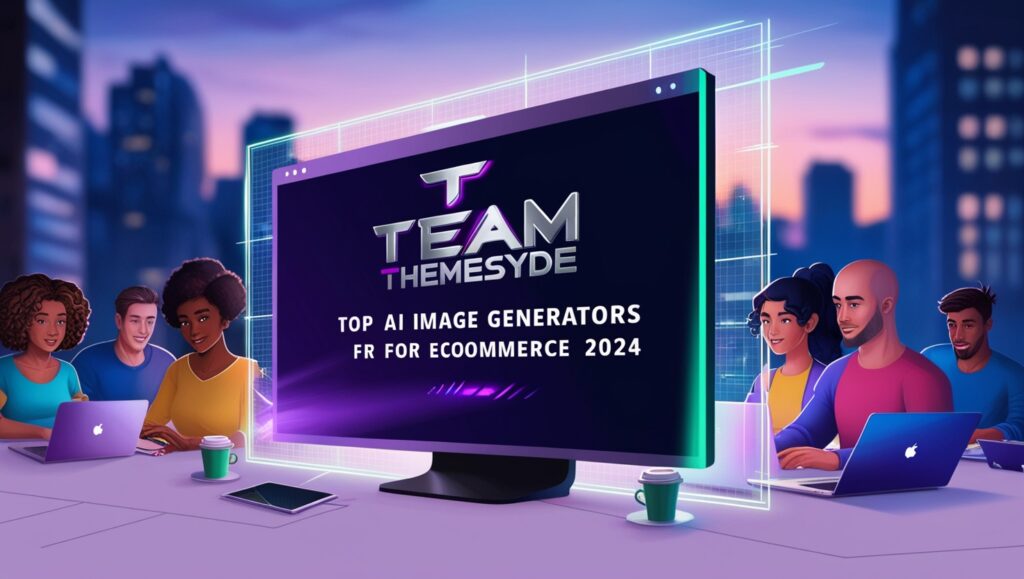
Common Mistakes When Using AI Image Generators for E-commerce
In the competitive world of e-commerce, leveraging AI image generators can greatly enhance your visual marketing strategy. However, several common mistakes can undermine your efforts. Understanding these pitfalls allows you to optimize your approach and produce compelling visuals that resonate with your audience. Let’s explore these mistakes in detail!
1. Overuse of Automation 🤖
- Losing the Human Touch:
- Explanation: While AI can quickly generate images, over-reliance on automation can lead to a lack of personal connection with your audience. Images produced by AI might feel sterile or overly artificial, lacking the warmth that human-generated content provides.
- Impact: An impersonal brand perception can deter potential customers. They may feel that the brand does not understand their needs or emotions, leading to reduced trust and engagement.
| Consequence | Example |
|---|---|
| Impersonal brand perception | A clothing brand relies solely on AI-generated images of models without any real-life context, resulting in a disconnect with potential customers. |
- Finding Balance:
- Strategy: Blend AI-generated images with real-life photographs or customer-generated content. This can include using AI to generate product images while supplementing them with images of customers using those products in real settings.
- Benefits: This balance enhances relatability and creates a richer narrative around your brand, fostering deeper connections with your audience.
2. Low-Quality Prompts ❌
- The Impact of Poor Prompts:
- Explanation: The quality of the output from AI image generators is heavily dependent on the prompts provided. Vague or poorly defined prompts often yield generic images that fail to capture the essence of your brand.
- Example: Instead of asking for “a chair,” specify “a cozy, modern armchair in a sunlit room with houseplants.” This specificity leads to more relevant and appealing results.
| Prompt Quality | Example |
|---|---|
| Poor Prompt | “Chair” |
| Good Prompt | “A cozy, modern armchair with soft cushions in a bright, sunny room.” |
- Crafting Effective Prompts:
- Tips: Use descriptive language that includes colors, materials, and context. Incorporate emotions or settings to guide the AI in creating images that align with your brand narrative.
- Outcome: Clear, detailed prompts lead to high-quality visuals that better reflect your brand identity and appeal to your audience.
3. Neglecting Image Consistency 🎨
- Brand Cohesion:
- Explanation: Consistency in visual branding is crucial. If your visuals vary widely in style or quality, it can confuse consumers and dilute your brand message.
- Importance: Cohesive imagery helps reinforce brand identity and makes it easier for customers to recognize your products across different platforms.
| Aspect | Guidelines |
|---|---|
| Color Palette | Establish a consistent set of colors that align with your brand identity. |
| Visual Style | Choose a coherent style (e.g., modern, minimalist) for all images. |
- Creating a Style Guide:
- Strategy: Develop a comprehensive style guide that details your brand’s color schemes, typography, and imagery style. This serves as a reference to maintain visual consistency across all marketing materials.
- Example: A skincare brand that uses soft, pastel colors and natural elements in all its visuals creates a calming brand experience that attracts a health-conscious audience.
4. Ignoring Target Audience Preferences 👥
- Understanding Your Market:
- Explanation: Failing to consider your audience’s preferences can result in visuals that do not resonate. It’s essential to understand what appeals to your target demographic.
- Research: Analyze data from social media, surveys, and customer feedback to identify trends and preferences.
| Audience Preference | Actionable Steps |
|---|---|
| Trendy Fashion | Stay updated on fashion trends to ensure your images are relevant and appealing. |
| Eco-Friendly Products | Highlight sustainability in your visuals to attract environmentally conscious consumers. |
- Leveraging Insights:
- Strategy: Use insights from platforms like Instagram or Pinterest to gauge which styles, themes, and colors resonate with your audience. Tailor your prompts accordingly to create appealing visuals.
- Outcome: Engaging visuals that reflect your audience’s interests lead to higher interaction and conversion rates.
5. Skipping Post-Editing ✂️
- Final Touches Matter:
- Explanation: AI-generated images often require post-editing to enhance their overall quality and appeal. Neglecting this step can result in images that feel unfinished or unpolished.
- Importance of Editing: Small adjustments, such as cropping, brightness, and contrast, can significantly improve the visual impact of your images.
| Editing Tool | Features |
|---|---|
| Adobe Photoshop | Advanced editing tools for detailed adjustments and effects. |
| Canva | User-friendly interface for quick edits, ideal for those without extensive design skills. |
- Post-Editing Techniques:
- Examples: Adjust brightness to enhance vibrancy, crop for better composition, or add text overlays for promotional messages. These enhancements elevate the overall quality and effectiveness of your visuals.
- Result: Well-edited images convey professionalism and attention to detail, improving customer perception of your brand.
6. Failing to Optimize for Different Platforms 📱💻
- Platform-Specific Requirements:
- Explanation: Different platforms have varying image size and format requirements. Neglecting to tailor images for each platform can lead to poor presentation and reduced engagement.
- Importance of Adaptation: Optimized images ensure that your visuals are displayed correctly and attractively, enhancing user experience.
| Platform | Optimal Image Size |
|---|---|
| 1080 x 1080 px for square posts | |
| 1200 x 628 px for shared links | |
| Website | Varies; typically 1920 x 1080 px for hero images |
- Adapting Content:
- Strategy: Always tailor the dimensions and resolutions of your images according to each platform’s specifications. This ensures maximum visibility and engagement.
- Outcome: Properly optimized images improve interaction rates and provide a seamless experience for users navigating your brand across different platforms.
7. Overlooking SEO Opportunities 🔍
- Importance of SEO:
- Explanation: Many e-commerce brands overlook the SEO potential of their images. Optimizing visuals can enhance visibility in search engines and drive organic traffic.
- Best Practices: Use descriptive filenames and alt text to help search engines understand the content of your images.
| SEO Element | Best Practices |
|---|---|
| Filenames | Use descriptive, keyword-rich filenames (e.g., “blue-summer-dress.jpg”). |
| Alt Text | Write clear alt text that describes the image contextually and includes relevant keywords. |
- Utilizing SEO Tools:
- Strategy: Consider using tools like Google Keyword Planner to identify relevant keywords for your products. Incorporate these keywords into your image metadata for better search visibility.
- Outcome: Properly optimized images can improve your e-commerce site’s search ranking, attracting more visitors.
Avoiding these common mistakes when using AI image generators is vital for enhancing your e-commerce strategy and creating visuals that resonate with your target audience. By finding a balance between automation and human input, crafting detailed prompts, ensuring consistency in your visuals, understanding your audience, performing thoughtful post-editing, optimizing for different platforms, and leveraging SEO opportunities, you can significantly improve your brand’s visual impact.
Actionable Steps:
- Maintain Authenticity: Combine AI-generated images with real-life content to foster deeper connections.
- Refine Prompts: Create specific and clear prompts to guide the AI in generating high-quality visuals.
- Establish Consistency: Develop and adhere to a style guide for cohesive branding across all platforms.
- Research Your Audience: Stay attuned to customer preferences and tailor your visuals accordingly.
- Edit Thoughtfully: Use editing tools to refine and enhance your AI-generated images.
- Optimize for Platforms: Adapt images to meet the specific requirements of each platform.
- Leverage SEO: Optimize image filenames and alt text to improve visibility in search engines.
By implementing these strategies, you can effectively harness the power of AI image generators to elevate your e-commerce brand and engage your audience in meaningful ways! 🌐✨
Future Trends in AI Image Generators for E-commerce in 2024
- Transformative Impact 🌟
The advent of AI image generators is revolutionizing the e-commerce landscape. These tools allow brands to create stunning, high-quality images quickly and efficiently. With 67% of consumers stating that image quality influences their purchase decisions, the importance of captivating visuals cannot be overstated. - Key Benefits:
- Increased Conversion Rates: Products showcased with high-quality images see higher sales as customers are more likely to buy items that catch their eye.
- Enhanced Customer Engagement: Personalized and relevant visuals engage customers and encourage them to explore products further.
2. Advanced Customization
- Emergence of Tailored Solutions 🛠️
AI technologies are enabling more advanced customization options, allowing brands to tailor visuals to specific customer preferences, demographics, and shopping behaviors.
| Customization Feature | Description | Benefits |
|---|---|---|
| Dynamic Image Creation | Generates images that adapt in real-time based on user data, such as previous browsing history and preferences. | Creates a personalized shopping journey, improving user experience. |
| Theme-Based Visuals | Customizes images to align with seasonal trends or specific marketing campaigns, enhancing relevance. | Boosts emotional connections with consumers during special occasions. |
| A/B Testing of Images | AI tools conduct A/B tests on different images to determine which visuals yield better engagement and conversions. | Ensures optimal performance of visuals based on actual data analysis. |
- User-Generated Content Integration 🖼️
Incorporating user-generated content (UGC) into marketing strategies is becoming increasingly important. AI can efficiently curate and display authentic images shared by customers, enhancing brand credibility. - Benefits:
- Builds Trust: Authentic visuals from real users can increase consumer trust and reduce skepticism.
- Encourages Community Engagement: Showcasing UGC fosters a sense of community and loyalty among customers, leading to higher retention rates.
- Dynamic Image Generation 🌈
AI allows for the generation of images on demand based on user interactions. For instance, if a customer selects a specific color or style for a product, the AI can instantly create a visual representation of that choice. - Example: A fashion retailer could let customers see how a dress looks in different colors or patterns, facilitating better decision-making.
3. AI-Driven Personalization
- Hyper-Personalized Ads 🎯
As digital advertising continues to evolve, hyper-personalization will play a pivotal role. AI image generators enable brands to create ads tailored to individual consumer preferences, maximizing relevance and impact. - Impact:
- Higher Click-Through Rates: Personalized visuals resonate better with target audiences, leading to increased engagement and click-through rates.
- Improved Customer Retention: Engaging visuals that speak to individual preferences foster brand loyalty, encouraging repeat purchases.
- Customized Product Images 🏷️
AI technologies allow brands to present products in multiple contexts tailored to different customer segments. For example, a kitchenware brand might showcase products in a home setting for families and a sleek, modern design for young professionals.
| Customer Segment | Visual Context | Benefits |
|---|---|---|
| Millennials | Lifestyle-oriented visuals that reflect everyday use. | Increases relatability and engagement among younger consumers. |
| Professionals | Sophisticated images that fit business environments. | Positions the brand as a go-to for professional attire or accessories. |
| Families | Family-friendly settings that show products being used by parents and children. | Creates an emotional connection through relatable imagery and situations. |
- Predictive Analytics in Visual Content 📊
Predictive analytics enables brands to anticipate trends and consumer behavior. By analyzing vast amounts of data, AI can suggest the types of visuals that are likely to resonate with target audiences. - Benefits:
- Staying Ahead of Trends: Brands that can quickly adapt to changing consumer preferences are more likely to succeed.
- Tailored Marketing Strategies: Creating visuals based on predicted behavior enhances the effectiveness of marketing campaigns.
4. The Role of AI in Visual Merchandising
- Automated Image Curation 🤖
AI can automate the process of curating images for online stores, selecting visuals that align with a brand’s style and marketing goals. This automation saves time and ensures consistency across the platform. - Image Optimization for SEO 🌐
AI image generators can also optimize images for search engines. By generating images with relevant alt text and descriptions, brands can improve their SEO performance, making it easier for potential customers to find them online.
| Image Optimization Feature | Description | Benefits |
|---|---|---|
| Automatic Alt Text Generation | Generates SEO-friendly descriptions for images, improving accessibility. | Increases search engine visibility, drawing more traffic to the site. |
| Compression for Fast Loading | Optimizes image sizes to reduce load times without sacrificing quality. | Enhances user experience by ensuring fast loading times, reducing bounce rates. |
5. Future of Visual Storytelling
- Enhanced Brand Narratives 📖
AI enables brands to tell compelling stories through visuals, enhancing the emotional connection with customers. By using AI to create narrative-driven visuals, brands can engage consumers on a deeper level. - Example: A travel brand might use AI-generated images to depict different vacation experiences, enticing customers with personalized adventure narratives.
- Interactive Visuals 📱
The future will see more interactive visuals powered by AI. Customers might be able to interact with product images—zooming in, changing colors, or viewing items in 3D, creating an immersive shopping experience. - Benefits:
- Increased Engagement: Interactive visuals keep customers engaged for longer, increasing the likelihood of conversion.
- Better Understanding of Products: Consumers can gain a clearer understanding of products, reducing uncertainty and boosting confidence in purchasing decisions.
- Embracing the Future 🌐
The integration of AI image generators into e-commerce strategies is not just beneficial but essential. Brands that leverage these tools will not only meet but exceed consumer expectations, improving their market position and driving growth. - Call to Action: E-commerce businesses should actively explore and invest in AI-driven image solutions. By embracing advanced customization and personalization techniques, they can enhance customer engagement, boost sales, and cultivate brand loyalty in 2024 and beyond.
Conclusion
AI image generators are revolutionizing the e-commerce landscape. These tools offer businesses the ability to create high-quality visuals quickly and efficiently. By leveraging AI, e-commerce brands can enhance their product presentations, improve customer engagement, and ultimately boost sales. The key benefits include:
- Cost-Effectiveness: Reduce reliance on expensive design services.
- Speed: Generate images in seconds, enabling faster time-to-market.
- Customization: Tailor visuals to match branding and seasonal campaigns seamlessly.
Ready to elevate your e-commerce visuals? Visit Themesyde for high-quality prompts at reasonable prices. Our expertly crafted prompts are designed to maximize the potential of your AI image generators, ensuring you get the most impactful results for your brand.
The role of AI in e-commerce is only set to expand. As technology continues to advance, we can expect AI image generators to become even more sophisticated, allowing for greater personalization and integration with other marketing strategies. E-commerce businesses that embrace these innovations will stay ahead in a competitive market, continually attracting and retaining customers through compelling visuals.
FAQs ( Frequently Asked Questions )
What Are AI Image Generators, and How Do They Work for E-commerce?
AI image generators are tools that utilize artificial intelligence algorithms to create images based on user inputs. For e-commerce, they can produce product images, promotional banners, and social media graphics tailored to specific marketing goals. These tools analyze existing visuals and generate new images, making them invaluable for maintaining a fresh online presence.
Can AI Image Generators Replace Professional Designers?
While AI image generators can produce high-quality images quickly and cost-effectively, they are not a complete replacement for professional designers. Designers bring creativity, strategic insight, and a human touch that AI cannot replicate. Instead, these tools serve as an enhancement, allowing designers to focus on more complex tasks while automating repetitive image creation.
Are Free AI Image Generators Good for E-commerce?
Free AI image generators can be a great starting point for small businesses or those testing the waters. However, they may have limitations in terms of customization and output quality. For e-commerce, investing in a premium generator often yields better results, enabling more tailored and high-quality images that align with branding needs.
I need Services with …
- Wordpress Service
- Shopify Service
- Youtube Service
- Cv and resume Service
- Linkedin Service
Latest Post
-
Top Daily Taste WordPress Theme: Best Choice for Your Site
$ 15Original price was: $ 15.$ 13Current price is: $ 13. Add to cartAdd to WishlistAdd to Wishlist -
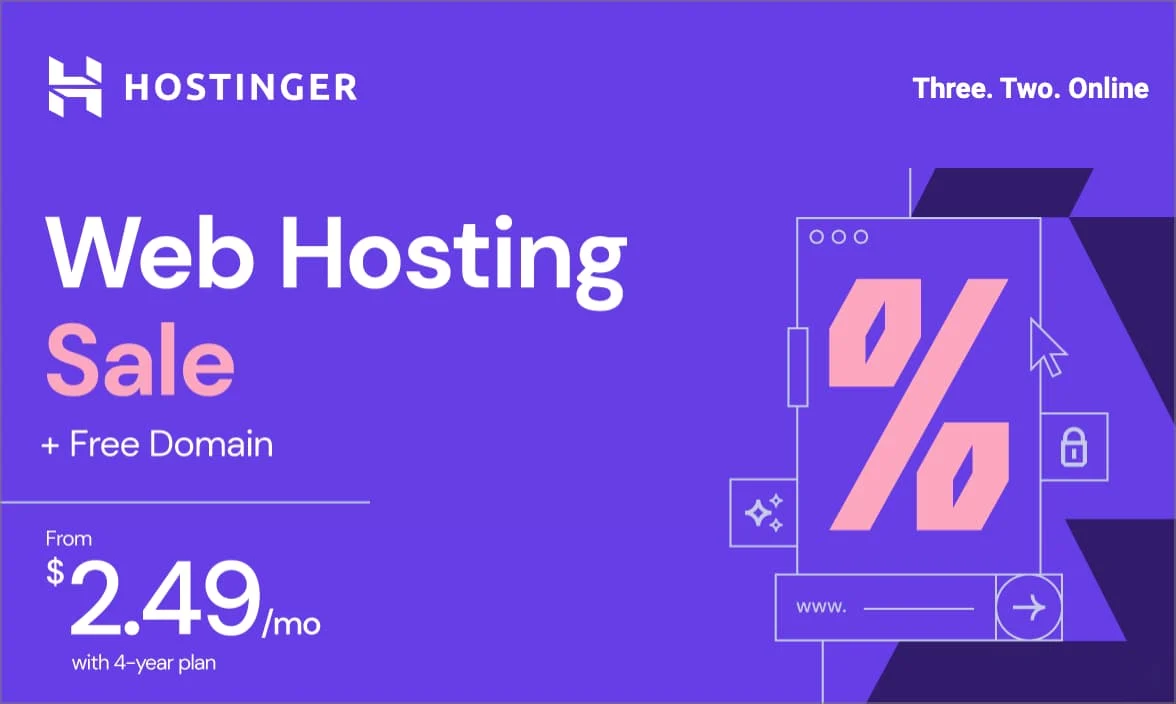
Get Hostinger’s Low-Cost Hosting Now!
Don’t miss out on affordable hosting with Hostinger – click now to bring your website online at an unbeatable price!



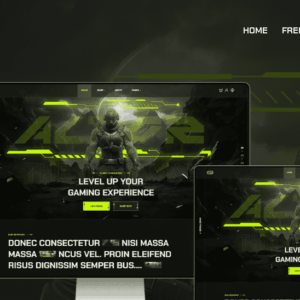
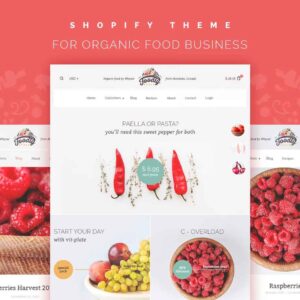

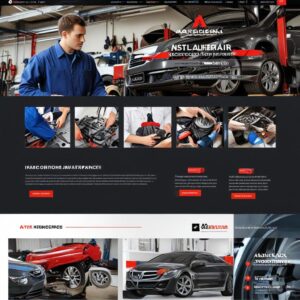
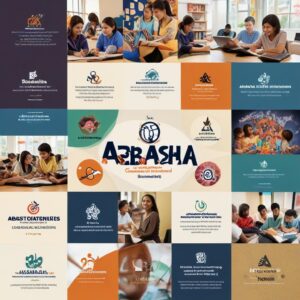


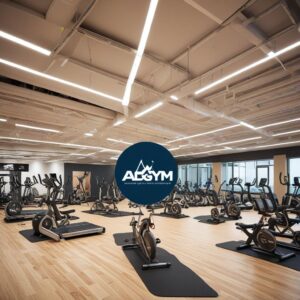
1 comment
[…] out Themesyde’s Blog on Digital Art Trends to gain more insights into current trends in digital art and how AI is shaping the […]